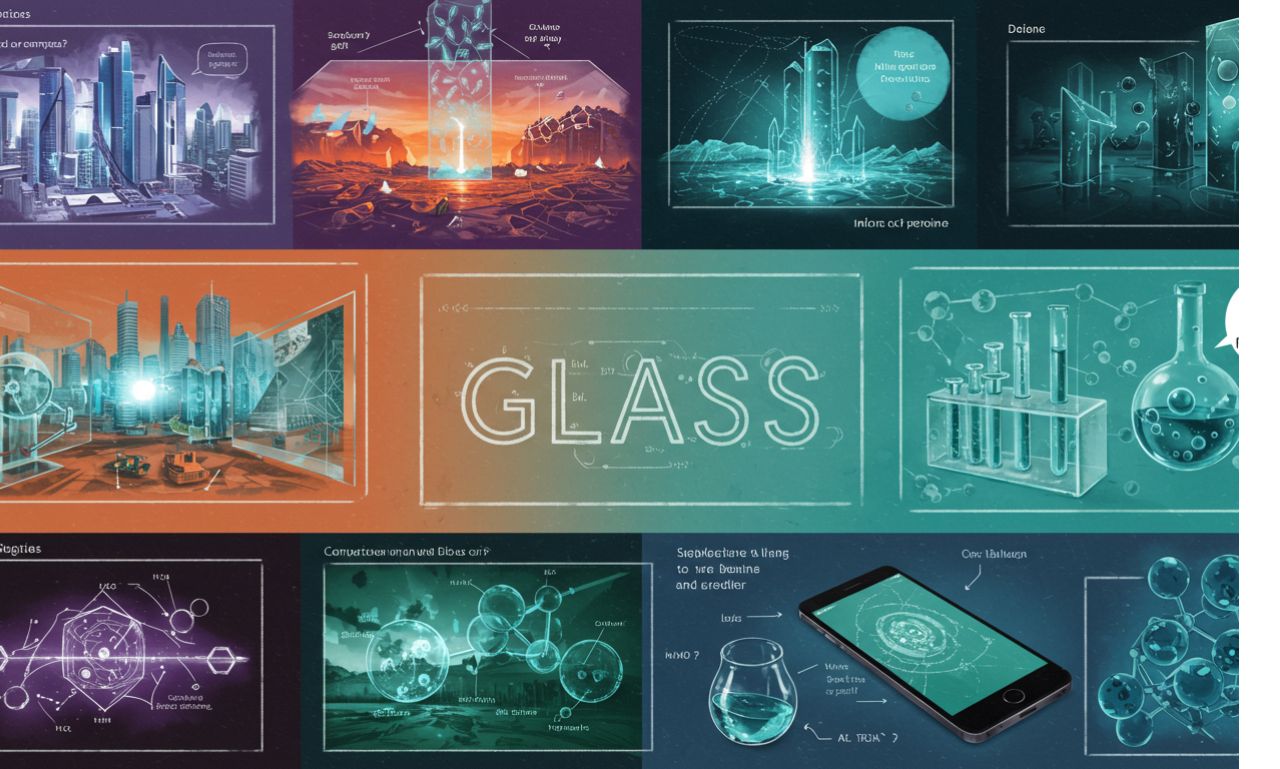Glass is one of the most versatile and widely used materials in human history. Known for its transparency, strength, and adaptability, glass has been part of civilizations for thousands of years. From decorative ornaments in ancient times to advanced applications in modern technology, glass continues to play a critical role in shaping how we live, build, and communicate.
Understanding glass involves looking at its composition, properties, manufacturing process, and uses across various industries.
What is Glass?
Glas is a solid material, usually transparent or translucent, created by heating sand (silica) along with soda and lime to very high temperatures and then cooling it rapidly. Unlike crystals, glas has an amorphous structure—meaning its atoms are arranged irregularly rather than in a fixed pattern.
This unique atomic structure is what gives glas its optical clarity, brittleness, and ability to be molded into different forms.
History
The history of glass dates back more than 4,000 years. Ancient Mesopotamians and Egyptians were among the first to experiment with glass, using it mainly for beads and small decorative objects. Over time, techniques improved:
-
Roman Era: Introduction of glasblowing around 50 BCE revolutionized production.
-
Middle Ages: Stained glas windows became a hallmark of Gothic cathedrals.
-
Industrial Revolution: Mass production techniques made glas affordable and widely available.
-
Modern Age: Advanced research led to specialized types like tempered glas, optical glas, and fiber optics.
Today, glas is not only a material of beauty but also a foundation of modern science and technology.
Properties of Glass
Glass is valued for its unique combination of properties:
-
Transparency: Allows light to pass through, making it essential for windows and lenses.
-
Hardness: Resistant to scratches, though brittle under impact.
-
Chemical Resistance: Does not react with most chemicals, making it ideal for laboratory use.
-
Thermal Properties: Can withstand heat; special glass types resist extreme temperature changes.
-
Electrical Insulation: Glass is a poor conductor, making it useful in electronics.
These properties make glas indispensable in both everyday life and advanced technologies.
Types
Different types of glas are produced depending on composition and processing:
-
Soda-Lime Glass: The most common type, used in windows and bottles.
-
Tempered Glass: Heat-treated for strength and safety; used in vehicles and buildings.
-
Laminated Glass: Layers bonded with plastic for safety; used in windshields.
-
Borate Glas (Pyrex): Heat-resistant, ideal for cookware and lab equipment.
-
Optical Glas: Used in lenses, microscopes, and telescopes.
-
Fiber Glass: Glas spun into fibers, used for insulation and composites.
Each type of glas serves a unique function in modern industries.
Glass in Architecture and Construction
Glas is central to modern architecture. Skyscrapers, office buildings, and even homes use glas extensively for its aesthetic and functional qualities.
-
Windows and Facades: Provide natural lighting and energy efficiency.
-
Safety Glas: Protects buildings from impact and extreme weather.
-
Decorative Glas: Enhances interiors with textures, colors, and patterns.
-
Smart Glas: Advanced glas that changes transparency with light or heat.
Architects rely on glas to balance design, safety, and sustainability.
Glass in Technology
Beyond construction, glass has become a backbone of technology. Its role extends into some of the most advanced fields:
-
Electronics: Smartphone screens, tablets, and TV displays.
-
Optics: Cameras, microscopes, telescopes, and glasses.
-
Communication: Fiber optic cables that transmit data at the speed of light.
-
Solar Energy: Glas panels used in photovoltaic systems.
Without glass, the modern digital world would not exist in its current form.
In Daily Life
In everyday activities, glas surrounds us in more ways than we realize:
-
Tableware: Glass cups, plates, and bowls.
-
Packaging: Bottles and jars for food and drinks.
-
Mirrors: Essential for grooming, vehicles, and design.
-
Art: Stained glass, sculptures, and jewelry.
Its durability, reusability, and beauty make it a preferred material across cultures.
Environmental Aspects
While glas production requires high energy, it is one of the most sustainable materials:
-
Recyclable: 100% recyclable without losing quality.
-
Eco-Friendly: Reduces waste and saves raw materials.
-
Reusable: Glas containers can be washed and reused multiple times.
Sustainable practices in glas recycling contribute to environmental protection and circular economies.
The Future of Glass
The future of glas looks promising with innovations aimed at sustainability and technology:
-
Smart Glas: Windows that regulate light and temperature.
-
Bioglass: Used in medical implants and bone regeneration.
-
Flexible Glas: Thin, bendable glas for next-generation electronics.
-
Nano-Glass: Stronger and more versatile for specialized uses.
These advancements show that glas is evolving alongside science and technology.
Conclusion
Glas is more than just a material—it is a symbol of human progress. From ancient ornaments to advanced fiber optics, glas has shaped architecture, communication, and culture. Its properties of transparency, durability, and recyclability make it indispensable in both practical applications and artistic expressions.
As industries continue to innovate, glas will remain at the center of architecture, technology, and sustainability. Its ability to adapt ensures that glas is not just part of our past but also a key component of our future.

